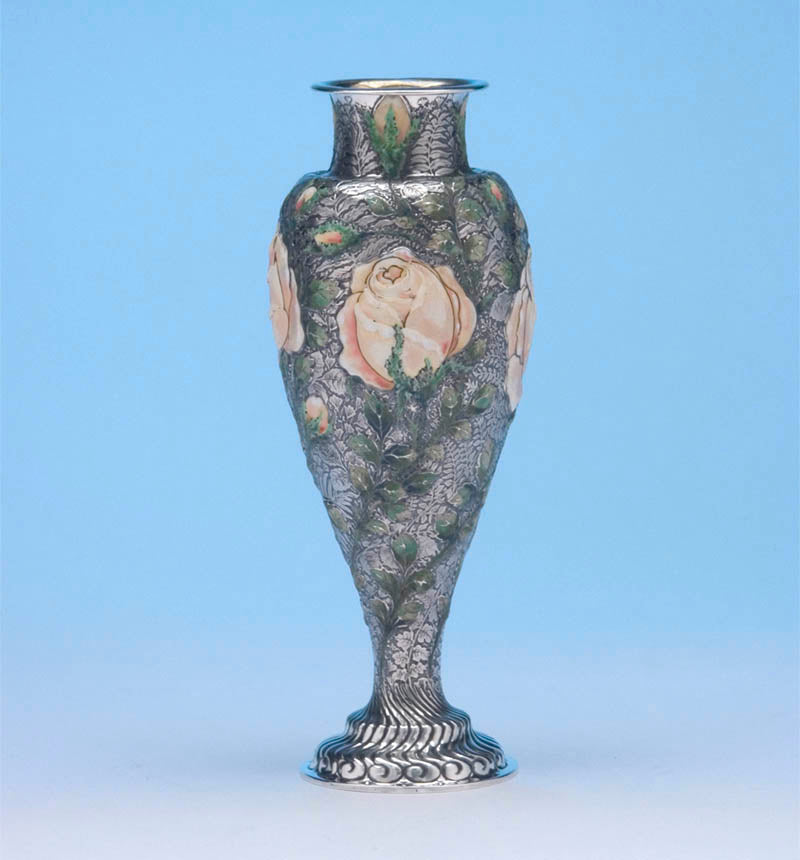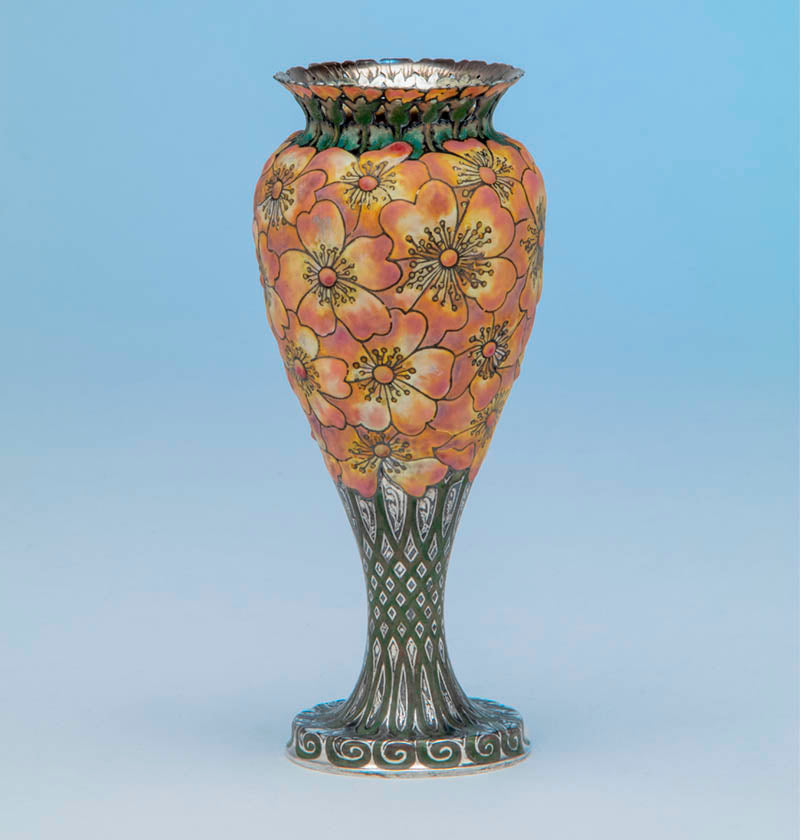Your Cart is Empty
FREE standard shipping to the continental US.
FREE standard shipping to the continental US.
FREE standard shipping to the continental US.
June 03, 2020 4 min read
One of the interesting revelations in the diaries of Charles T. Grosjean, the lead silversmith in Tiffany's silver shop, is that Tiffany did no in house enameling until the extraordinary Mackay Service of c. 1878. This is not surprising as we are not aware of any other American silver firm that did enameling at that time. The 1860 Industrial Census of New York City shows that enameling was a specialist trade with specialist firms, sometimes combining the practice with the fabrication of jewelry.
That changed during the creation of the Mackay Service. Edward C. Moore, the director of Tiffany's silver department, in collaboration with Grosjean, designed the after-dinner coffee cups of the service.
On February 14th, 1878, Grosjean writes, "Decided upon the style of Coffee Cup for Mackey order." (1) They were to be enameled. On April 25th, Mr. Pearce and Mr. Kursh took a cup to enamel, "Mr Kursh thought it would turn out very well." (2) Soon, Moore decides to have Tiffany enamel the cups in-house. On May 13, "Mr Dimes is to go to Philadelphia and have Mr Kursh show him how to enamel & also furnish the enamels for our work." (3)

The results of their first effort are stunning, jewel-like silver gilt cups and saucers with rich champlevé enamel decoration. (See here.) Champlevé enamel is when silver (or other substrate) has been removed from the surface to create a space for the enamel.
Over the next decade, Tiffany's silver department would create an innovative and unique style of enameling focused on a soft pastel color spectrum and matte finishes. Finished pieces with this style enamel start appearing in the late 1880s. They proudly exhibited examples, some associated with their "Saracenic" styled silver, at the 1889 world's fair in Paris to great acclaim.
Lucien Falize, the great Paris jeweler and art critic, wrote of Tiffany's exhibit, "...it matters very little whether they learned their art from the Japanese, the Indians, or from us, since it is evident that they use it in a manner thoroughly original and absolutely perfect." (4)

To the world, this style of enameling became known as "American."
This collaborative development included the work of Edward C. Moore, the director of Tiffany's silver department, Charles T. Grosjean, the shop superintendent and lead designer, and brothers Richard and Joseph Dimes. Both Dimes brothers were born in England in the home of a silversmith. Richard was a finisher, specializing in color and technical processes, and Joseph a plater, specializing in galvanic processes, which included plating, electrotyping, and inlaying and removing metals electronically.
Technically, this enameling process includes a series of layers to develop color, and was likely fired in stages multiple times. The enamel is colored with metal oxides and includes lead to promote both melting and adherence to the silver substrate at a lower temperature. Lead also helps create the opaque appearance of the enamel. (5) Much of this is champlevé work.


These vases show Curran developing a unique style of art nouveau expression that was his alone and purely American. Based on natural motifs, they are organic and bold. On the three smaller vases, around the bases, we can see the swirling, almost whiplash, decoration that would come to define the Franco-Belgian school of art nouveau. Yet the overall design relies upon a more realistic interpretation of nature - a central tenant of the American school of art nouveau design.

American art nouveau (almost) never became as stylized as the European styles, but relied on the natural flora of our country to display this organic sense of design. In this context, these 7 vases designed by Curran are some of the most beautiful and exceptional American art nouveau pieces ever made.
Endnotes:
Sign up to get the latest updates and current musings in our occasional newsletter…
